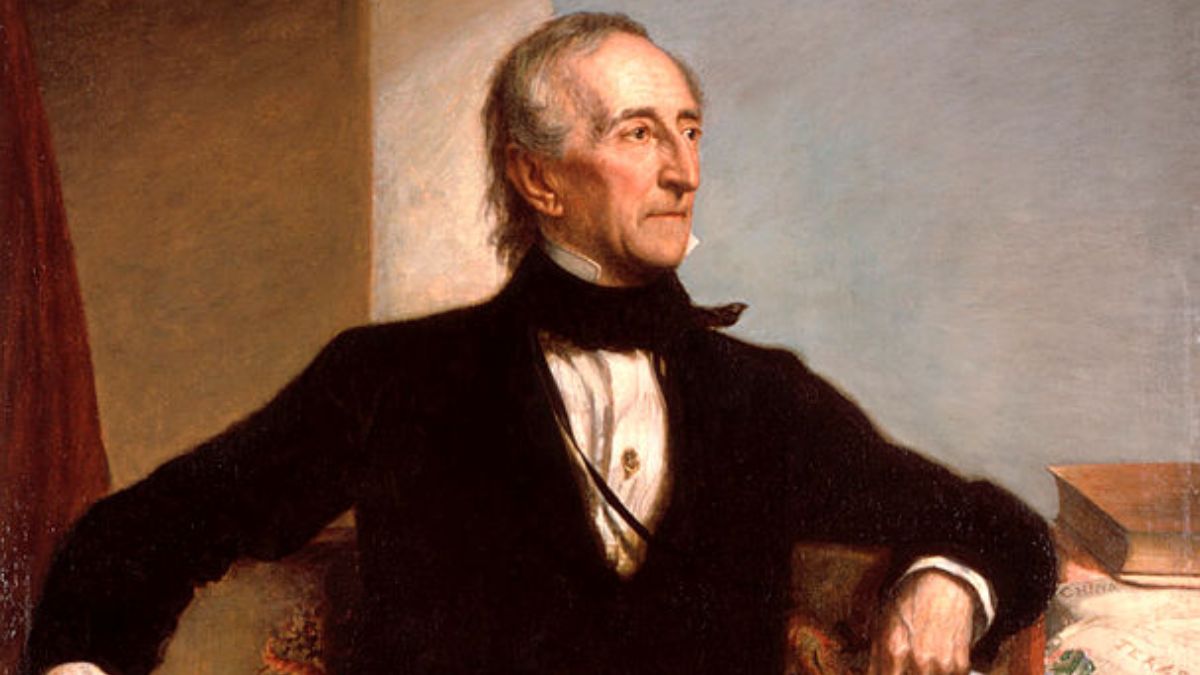Editor’s Note: This profile is part of a series taking a closer look at US presidents ahead of the 2024 presidential election between Donald Trump and Kamala Harris.
John Tyler was a man of many firsts.
He was the first Vice President to be elevated to the top job after the death of his predecessor. Critics thus dubbed him ‘His Accidency.’
At 51, he was at the time the youngest man to serve as president.
He was also the first president whose wife died while in office – and was the first president to marry while in office. Tyler also served as a representative of the Confederacy.
Let’s take a closer look at the 10th President of the United States.
Early life
Tyler was born on March 29, 1790, in Virginia’s Charles City county into a wealthy planter family. His parents were John Tyler and Mary Armistead.
John was a member of the Virginia House of Delegates during the American Revolution. He later served as Governor of Virginia. Tyler was raised on the family plantation in Greenway. He was taught to be a strict constitutionalist – to adhere to the document as written above all things.
He attended the College of William & Mary – after which he began an apprenticeship with his father and ex-United States Attorney General Edmund Randolph in preparation for a career in the law. In 1809, Tyler was admitted to the bar.
In 1813, he married Letitia Christian and bought a patch of land nearby and constructed his own plantation.
Politics
Like his father, Tyler began his career in the Virginia legislature. Tyler on multiple terms in the legislature, served as a United States representative, Virginia Governor and US Senator.
Throughout his career, he showed consistent support for states’ rights. Tyler also opposed the Missouri Compromise.
Though he was a Democrat, Tyler would oppose some policies of then-president Andrew Jackson (1829-1837) – whom critics had dubbed a ‘tyrant’ and ‘King Andrew.’
In 1840, the Opposition Whig Party nominated Tyler as Benjamin Harrison’s vice president. Their hope was to attract the support of those who backed states’ rights in the South and despised what was called Jacksonian Democracy.
Harrison and Tyler, known as “Tippecanoe and Tyler Too,” defeated the Democratic incumbents Martin Van Buren and Richard M Johnson.
Time in office
On April 4, 1841, Harrison passed away. It had been just a month since the inauguration. Tyler now became the first vice president to take the Oval Office after the death of the president.
At the time, a debate broke out over exactly how much power Tyler would hold. Tyler, though, was in no doubt. He quickly assumed the full powers of the presidency and moved into the White House.
Though the Whigs were not unduly unhappy, they would soon find themselves in a face-off with the man who was leading the country. Nearly the entire Cabinet resigned after Tyler vetoed two bills that aimed to reestablish a national bank.
The Whigs then threw Tyler out of the party. By now, Tyler had also alienated his friends in the Democratic Party. He was president, but he was also a man without a party.
A year later, the first impeachment resolution ever against a president was introduced in the House of Representatives.
Despite the issues with the Congressional Whigs, Tyler’s administration actually achieved some of its goals. These included passing the Log Cabin Bill, establishing the United States Weather Bureau, ending the Second Seminole war and the rebellion against the Rhode Island government.
Tyler would also sign legislation to annex Texas before leaving office – arguably the biggest accomplishment of his presidency.
By then, Tyler’s wife Christian had passed away – making her the first president’s wife to die while he served in office. Tyler then married Julia Gardiner – becoming the first president to marry while in office.
Tyler in 1844 entered the race for president but found few takers for his candidacy. He ultimately threw his support behind James K Polk. In 1845, Tyler left the White House.
When states began seceding in 1861 before Abraham Lincoln’s inauguration, Tyler tried in vain to stop them. When he failed, he returned to Virginia and began working to establish the Confederacy. Tyler was elected to the Confederate House of Representatives shortly before his death in 1862.
He was given a full state funeral by his ‘countrymen.’
Legacy
Though Tyler was not a massively successful president, he did tread new ground. His stepping into the top job and assuming all the powers of the presidency set an example that is followed to this day.
It also showed that the line of succession and the orderly transfer of power worked. In short, the system held.


)

)
)
)
)
)
)
)
)



